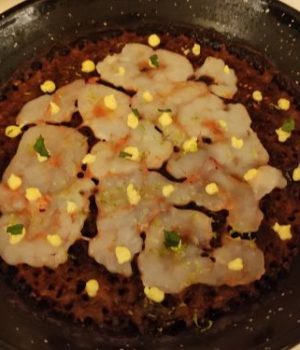In Menorca, one of the best preserved islands in the Mediterranean, everything is synonymous with quality, as are its gastronomic products, of great diversity for the small size of its territory.
In the last five years gastronomy has made a great leap. Not by chance this year Menorca has been declared a European Region of Gastronomy. A good reason to visit it and see how its famous Gin Xoriguer is made and learn about the resurgence of its wine, as well as attend the artisanal production of its famous Mahón-Menorca cheese. To discover its nature, there is nothing better than walking the Camino de Cavalls, 184 kilometers around the island, and enjoying some of its more than 100 beaches and coves.

Nature and agricultural activity have always coexisted in balance in Menorca, which is why it is Biosphere Reserve since 1993. Livestock and agriculture had a great weight in the Menorcan economy and for millennia were the main source of subsistence.
The island's landscape is characterized by dry stone walls, laid in horizontal courses without mortar, to divide crops and livestock. Sheep farming and wheat cultivation predominated in the XNUMXth century, when cow's milk and cheese production intensified.
PDO Mahón-Menorca
In Menorca, cheese was made from the talayotic period, but it was the English who, during their presence on the island in the XNUMXth century, gave a boost to its production and export. That's where the origin of its name comes from, "Mahón”, by the port of dispatch of the product. They are pressed paste cheeses, square in shape, with rounded edges and corners. Within the PDO two types of cheese are distinguished. Mahón-Menorca cheese is made with pasteurized milk and molds can be used to shape it. The Mahón-Menorca-Artisan cheese is made with raw milk from the farm itself, and the “fogasser” (100% linen cloth) is used to shape it.
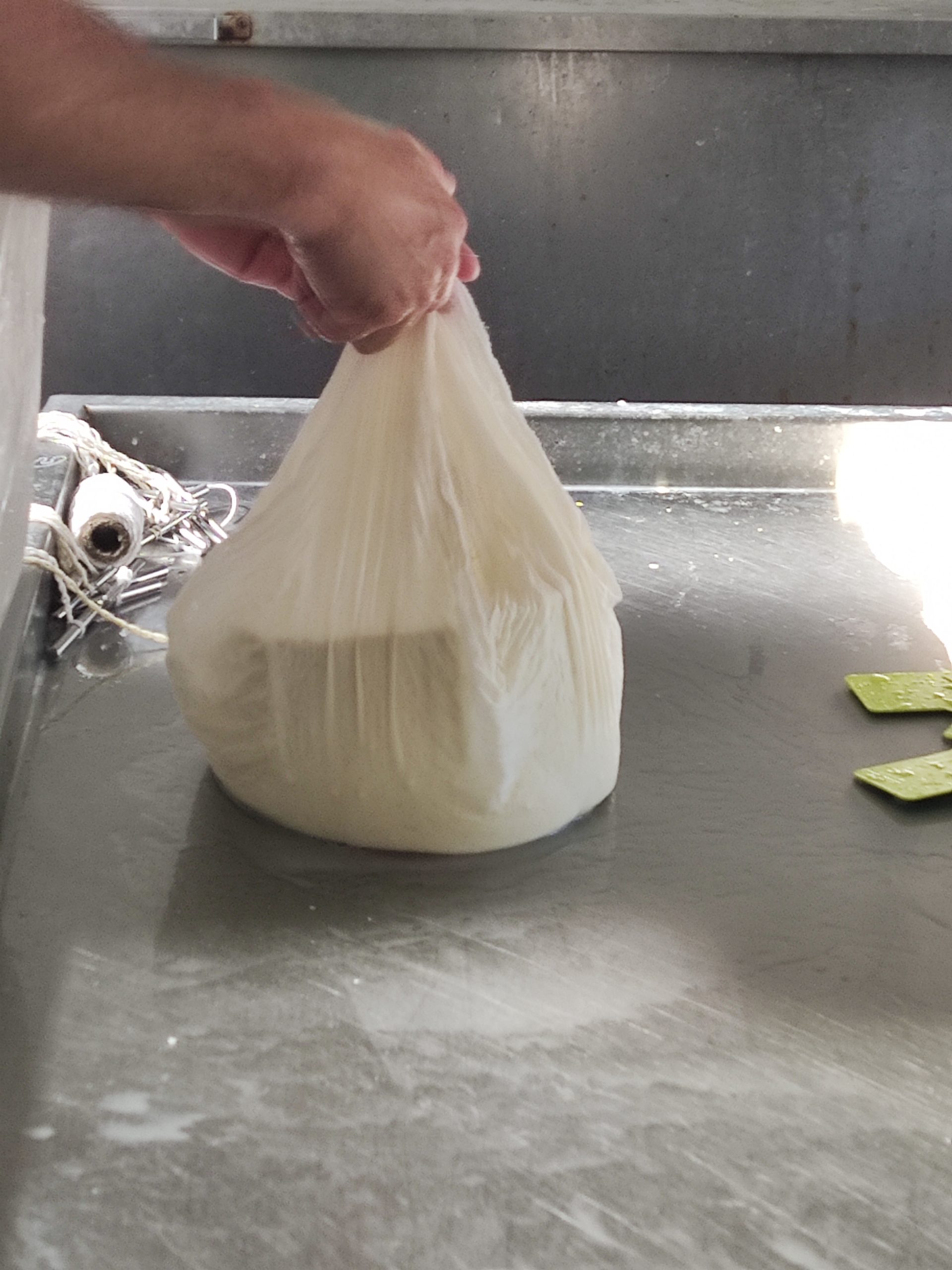
The types of cheese are soft (from 21 days of maturation), semi-cured (from 60 days) and cured (from 150 days).
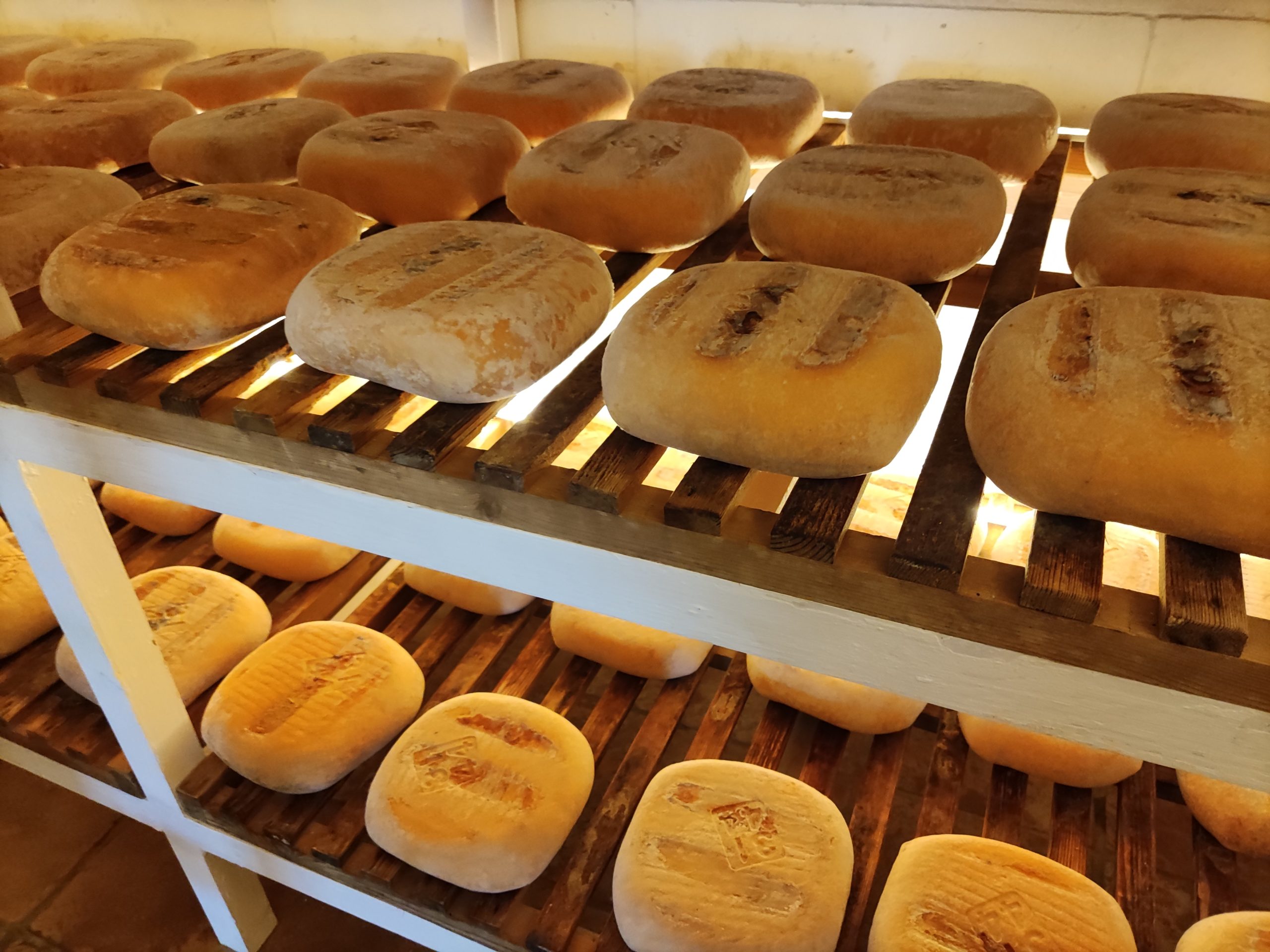
Currently there are 39 dairies who make cheese on the island. Some of them can be visited, such as the famous ascent , where since last year you can be a peasant for a day and take home your own cheese. You can also visit Son Piris, small and family owned, which has 40 cows and its cheeses have also been awarded.
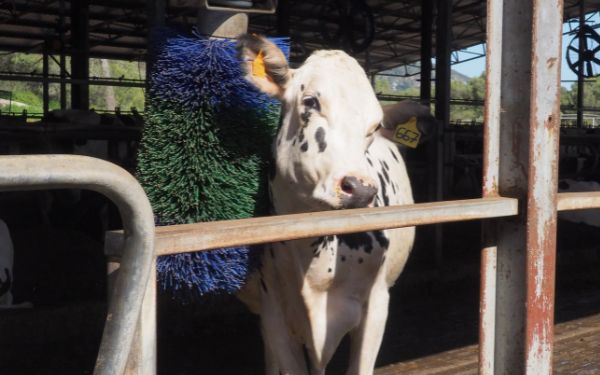
Wine production returns to the island
With the English domination, the island came to have 1.300 hectares of vineyards, which were already cultivated during the Roman Empire, but with phylloxera and the growth of cows and cheese, the wine was left only for self-consumption.
For 20 years, wine has been experiencing a resurgence: there are more and more extensions of vineyards and of the nine wineries that currently exist, there will soon be 12, as Clara Salord, manager of the winery, tells us. Binitord .
In Menorca there are no autochthonous grape varieties, as she herself verified after searching conscientiously for vine shoots all over the island. In its 10 hectares, the varieties that have best acclimatized are Cabernet, Syrah, Merlot, Malvasia and Chardonnay. Binitord emerged in 2002 as a hobby for his parents and currently they make two red wines, one white, one rosé, and the only vermouth on the island. In total, 180.000 bottles of wine are produced on the island each year, which are consumed in Menorca.
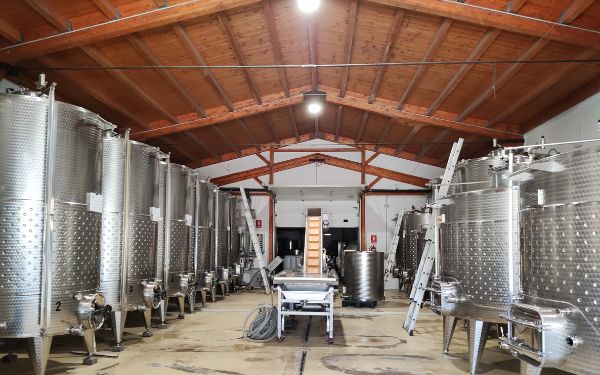
This winery makes visits just like, since last year, Torralbenc , which also has an agriturismo, the first luxury one built on the island on a typical “mares” farm, the typical rock.
Good wines and sustainable production
Behind these wines are the owners of the Remírez de Ganuza winery. "We are looking for quality more than quantity," says salesman Claude Geyer. When decades ago the wine here was only for self-consumption, the image people had of it was that it was bad and expensive, he points out. "Now very few people know that wine is made in Menorca and that it is also good," he says.
The farm has 71 hectares, of which 16 are vineyards that began to be planted in 2005. The vineyards are the garden of the guests of the 27 hotel rooms. The white is its best-selling wine and the red, with Merlot and Syrah grapes, follows the same line of freshness. The pale pink rosé is inspired by the South of France, and harbors aromas of strawberries, cherries, and blueberries. The visit includes a tasting with views of the vineyard garden and a visit from the occasional turtle.
Agrotourism, hotel sustainability
Another agrotourism built after rehabilitating a farm is Ruby Rafal , conceived as a small Menorcan farmhouse with a stately home and four other units for a total of 13 luxurious rooms. It has chickens on the farm and its own orchard where they stock up on vegetables, citrus fruits and strawberries for breakfast and its restaurant by the pool.

The agrotourism also occupies a restored farmhouse Sant Joan of Binissaida , whose farm hosts an agricultural project. Here an olive plantation has been recovered, from where they get their oil, a production resumed on the island in this century and which has four oil mills in Menorca. The endemic tree is the wild olive, although the arbequina capitalizes on the production of extra virgin olive oil. In this agrotourism, the visitor learns to make mayonnaise, the most famous and consumed product of Menorcan origin in the world.
Also craft beer
The island also has craft beer, Graham Pearce , the only one in Menorca, in production since 2011. Last year it won the award for the best craft brewer in the Balearic Islands.
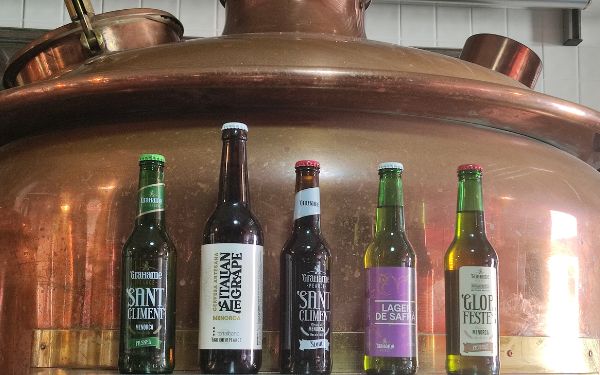
The master brewer, Roger Vila, explains at the factory, located in Sant Climent, next to his parents' restaurant, Es Moli de Foc, that he did not seek "extreme tastes, but balanced beers that everyone likes, with nuances such as saffron or The citrus". They have ten types of beer and 90% of their production is Lager, with three malts and two hops. With the only saffron producer on the island, he makes the Lager de Safrá. Talaiotic is an explosion of aromatic herbs based on rosemary, honey and cereals. And seasonal, they have just released a Pale Ale called "Glop de Festes", in collaboration with Gin Xoriguer, designed as a reinterpretation of the ointment or gin with lemonade that is consumed at the island's summer festivities starting in San Juan. .
Gin, the English heritage
Xoriguer Gin It is a must-see in Menorca where you can attend a totally artisan elaboration of this gin, probably the oldest in the Mediterranean, which has been carried out in the same way since the foundation of this distillery, in 1945. It is made with a recipe from 1750 in four copper stills -the oldest is 300 years old-. The tradition of this drink was brought to Menorca by English and Dutch sailors, who ordered gin here at a time when it was prohibited in Great Britain. Ceramic bottles with handles were used to be able to hang them on the boat or on the belt. Its founder, Miguel Pons Justo, was working as an accountant at another distillery on the island when it burned down and closed. When he lost his job, he asked for permission to make the distillate, found the recipe in three months, did tests and went with a barrel to the San Juan festivities, where he found that people liked it.
The name of Xoriguer, kestrel in Spanish, comes from the nest of these birds that was in the mill -which appears on the label- that belonged to his family. Gin Xoriguer is made using a traditional method called simple distillation with alcohol, juniper from the Pyrenees, water and secret herbs.
The juniper, water and alcohol are left to macerate for several hours and then it is put on fire fueled by natural Menorcan pine and wild olive wood. It evaporates, after which it enters a coil with sea water that cools it. Of the production that comes out - first the heads, which have 96 degrees of alcohol, then the heart and finally the tail, which is almost water - only the heart is used. Gin contains both molasses and wine alcohol. The drink does not have IGP since in Menorca there is no juniper. After receiving it from the Pyrenees, it is left to rest in the factory for between two and three years and is sieved by hand. Every year they use up to 10 tons of juniper.
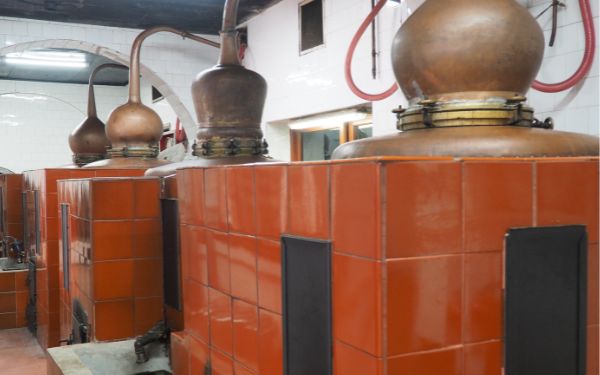
Pomade the popular drink
From these four Gin Xoriguer stills, located in the port of Mahón, 3.000 liters of gin are produced per day and 500.000 per year. The factory has just released a new Ointment (in Ciutadella it is called gin & lemonade) with 8% alcohol, which will be widely consumed by San Juan and in the rest of the festivals on the island until September. For its consumption it is recommended to remove it 15 minutes before from the freezer and a little mint is welcome. Gin Xoriguer is its flagship product, but it also produces other distillates such as Saffron Island, which seeks to recover the medicinal mixtures used by sailors for their ailments. It is made from the distillation of juniper, aloe vera, ginger, cardamom and orange, and macerated with saffron from the island.
The Cloister Market
Very close to the distillery is the Mercat des claustre, one of the most traditional markets on the island. It is inside a cloister, built in the XNUMXth century by the Carmelite order, which functioned as such until Mendizabal's confiscation. It later hosted a prison. Farmers from all over the island came here to sell their products and thus the market was created. Here you can find typical products of the island such as its cheeses and sobrassada, and other typical sausages such as camot, cuixot, carn-i-xulla and botifarró.
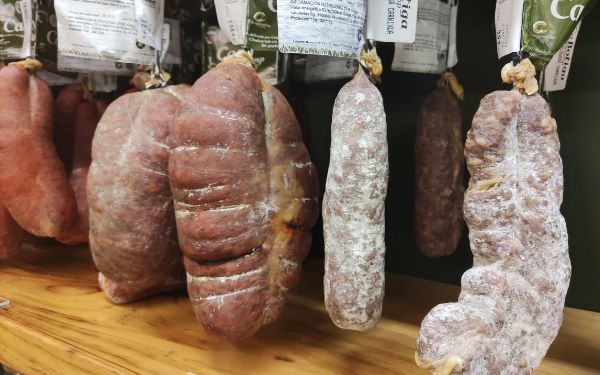
Also saffron and salt from Fornells, as well as ensaimada, Rubiols (stuffed crescent-shaped pastries), Crespells (sweet pastries), coca or congret. Next to it is a fish market where you can find all its local varieties such as lobster, skate, snapper, Norway lobster, cockles, corns, nettles, monkfish, oysters, espardenyes and raors.
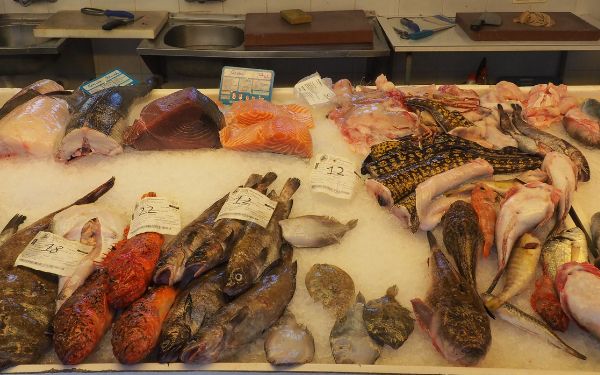
mushroom production
In Menorca there are also mushrooms, edible up to 180 different types, chanterelles and chanterelles the most, although many people are unaware of it and this product did not appear in the traditional Menorcan recipe book. To spread its consumption, in Sa Sinia des Bolets They carry out cultivation workshops and elaborations with local products, in addition to selling elaborated with mushrooms.

Sa Sinia des Bolets. Photo: Gastronomic Information They have baby eels with bolets, stuffed aubergines, croquettes, cannelloni, pickled bolets, Galician style, among many others, and they have just brought out mushroom pizzas, with tomato sauce, red pepper, carrot and Minorcan mozzarella. Here they grow five different types of mushrooms, which they sell to restaurants: shitake, cardoon mushrooms, poplar, maitake and oyster mushrooms. Cicerón Mercadal transformed his hobby into this business. “We knew that it was very difficult to live from growing mushrooms in Menorca because there is not enough. In winter we give mycology workshops to all the institutes of Menorca. We also sell a production kit that has become popular as a gift. And the mushrooms that are not sold, go to the kitchen for our preparations”, he explains.
Minorcan cuisine
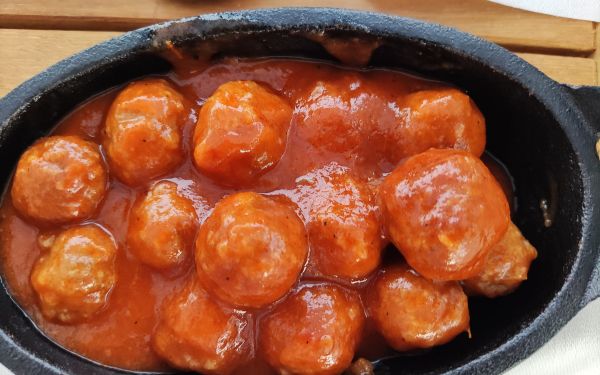
The Minorcan dishes they stand out for their simplicity, like their traditional “oliaigua” soup, tells us Silvia Anglada, ambassador of Menorca European Region of Gastronomy and chef, at her restaurant in Ciutadella, Es test de sa Silvia. It can be seen in the more than 200 recipes included in "Art de la cuina", written in the XNUMXth century by Fra Francesc Roger, the oldest benchmark of Menorcan gastronomy. “Menorca brings tradition to Europe”, says the chef, who asks “that it last as a European Region of Gastronomy, that it not be a boom. Just as we are a Talayotic region, that we are a gastronomic region beyond 2022”. She emphasizes that "because of how small the island is, we have a diverse number of products." Silvia offers traditional dishes in her restaurant such as arros de la terra, also known as arros moro, which despite its name does not contain rice but xeixa wheat, native to Menorca.

It seems that it was introduced to the island by the Romans and its cultivation disappeared until it was recovered in the last decade. This dish used to be made by the peasants on the days of the slaughter and everything that was available was added to it, such as meat, sobrassada, potato and pumpkin. He also brings together two typical Menorcan products on a plate, such as white prawn and White butifarra (Without blood). Cook as Fra Roger used to do the cod au gratin with blue cheese and the beef - an animal that is recovering on the island, which produces little milk and very good meat - with half a lemon squeezed at the moment of serving. In Ciutadella, Mon Restaurant is also highly recommended, with dishes based on local produce and updated recipes, by chef Felip Llufriu and the Menorcan Young Chef 2021 Cristina Llorens.
The exquisite Menorcan sweets
Another typical Menorcan product that is also made entirely by hand is the ensaimada, as can be seen in sa sucreria , which has been making them since 1873. Located in Es Mercadal, a town in the center of the island, eight people make ensaimadas by hand, one by one, every day, up to 100.000 a year. Its name comes from the Majorcan saim, which means lard. Although its origins are somewhat uncertain, the coexistence of Arab and Jewish culture could have given rise to the birth of this Balearic sweet. Pork fat is one of its ingredients, coincidentally prohibited in both religions. This would be due to the fact that after the reconquest, the Arabs and Jews who remained on the islands demonstrated their conversion by eating prohibited foods.. In addition to lard, the ensaimadas contain flour, water, sugar and sourdough. The ingredients are kneaded, after which a kind of “churro” is made, with which it is shaped, fermented and baked. In the 70s the first variation appeared, being filled with angel hair.
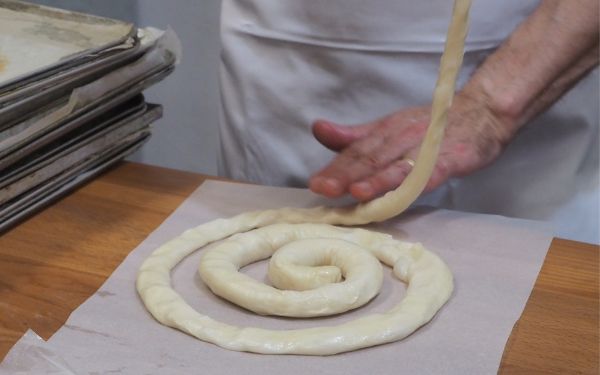
Currently in Sa Sucreria there are also variants with cream, chocolate and sobrassada. It is eaten in company, as a snack or breakfast, and with the family and in celebrations.
An island with a lot of history
To delve into the history and archeology of the island, there is the Municipal Museum of Ciutadella, located in Can Saura, a noble house. Along with the famous beaches and coves of Menorca, on the island there are more than 1.500 archaeological sites over 3.000 years old. Its most famous prehistoric site is La naveta des tudons, a funerary monument found only here and said to be the oldest in all of Europe.
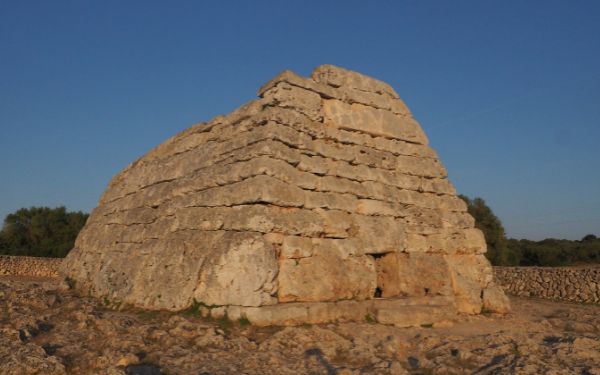
The navetas were built around the year 1000 BC and belong to the talayotic culture of the island. It was a collective funerary monument where individuals belonging to an island community were buried. The archaeologists located more than 100 individuals and along with them, personal objects such as bracelets, necklace beads and bronze pendants.


